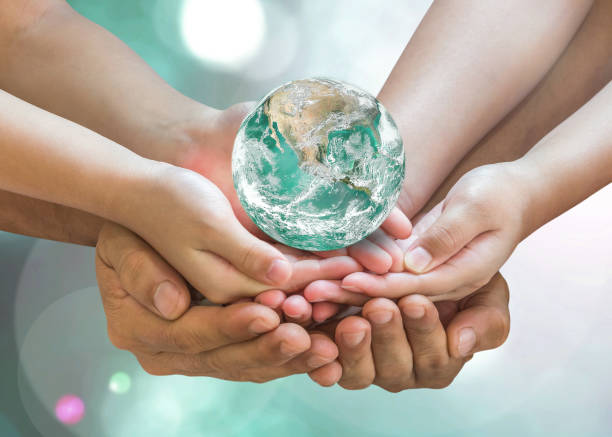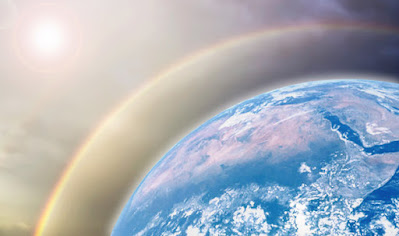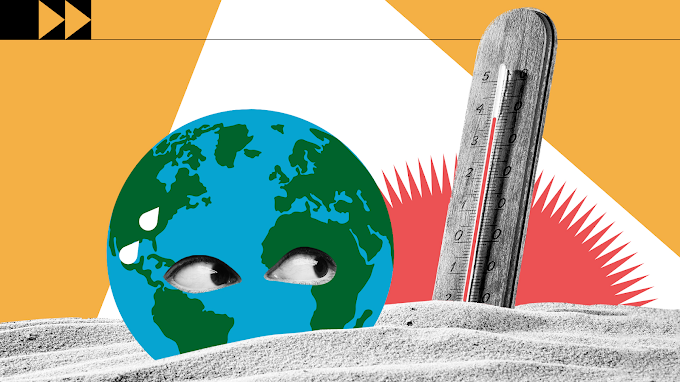What is Montreal Protocol?
The Montreal Protocol is a historic global accord aimed at protecting the Earth's ozone layer. The agreement, signed in 1987, has been a critical step in addressing the issue of ozone depletion and contributing to larger global climate change efforts.
Historic Background of Montreal Protocol
The discovery of a growing hole in the ozone layer in the 1980s sparked global concern and sparked efforts to address the problem. Scientists had long known that the release of certain chemicals, such as chlorofluorocarbons (CFCs), into the atmosphere could harm the ozone layer.
The growing evidence of the depletion of the ozone layer brought the issue to the forefront of international attention and led to the creation of the Montreal Protocol.
The Montreal Protocol is a legally binding agreement that sets out the responsibilities of its member countries to reduce and eventually eliminate the production and consumption of ozone-depleting substances.
The protocol requires signatory countries to establish national regulations and controls on the production and consumption of these chemicals and report their progress regularly to the international community.
 |
| United Nation |
In 1987, the United Nations Environment Programme (UNEP) brought together representatives from around the world to sign the Montreal Protocol.
To date, 197 countries have signed the Montreal Protocol, making it one of the most successful international environmental agreements.
The accord aimed to reduce and eventually eliminate the production and consumption of ozone-depleting substances, such as CFCs, halons, carbon tetrachloride, and other chemicals.
What are Ozone depleting substances?
- Class I ODS (chlorofluorocarbons (CFCs)
- Class II ODS (hydrochlorofluorocarbons (HCFCs)
- Chlorofluorocarbons (CFCs)
- Hydrochlorofluorocarbons (HCFCs)
- Carbon tetrachloride
- Methyl chloroform
Why is the Ozone Layer Important?
The ozone layer is important because it protects life on Earth from harmful ultraviolet radiation. Without the ozone layer, this radiation would reach the Earth's surface and cause significant harm to human health, as well as to other living organisms, crops, and marine life.
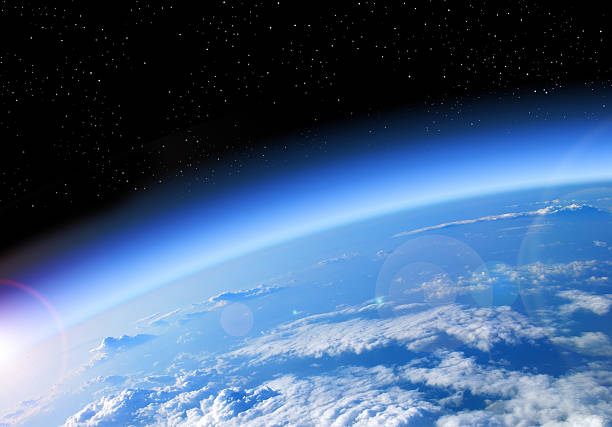 |
| Ozone layer visible around the Earth |
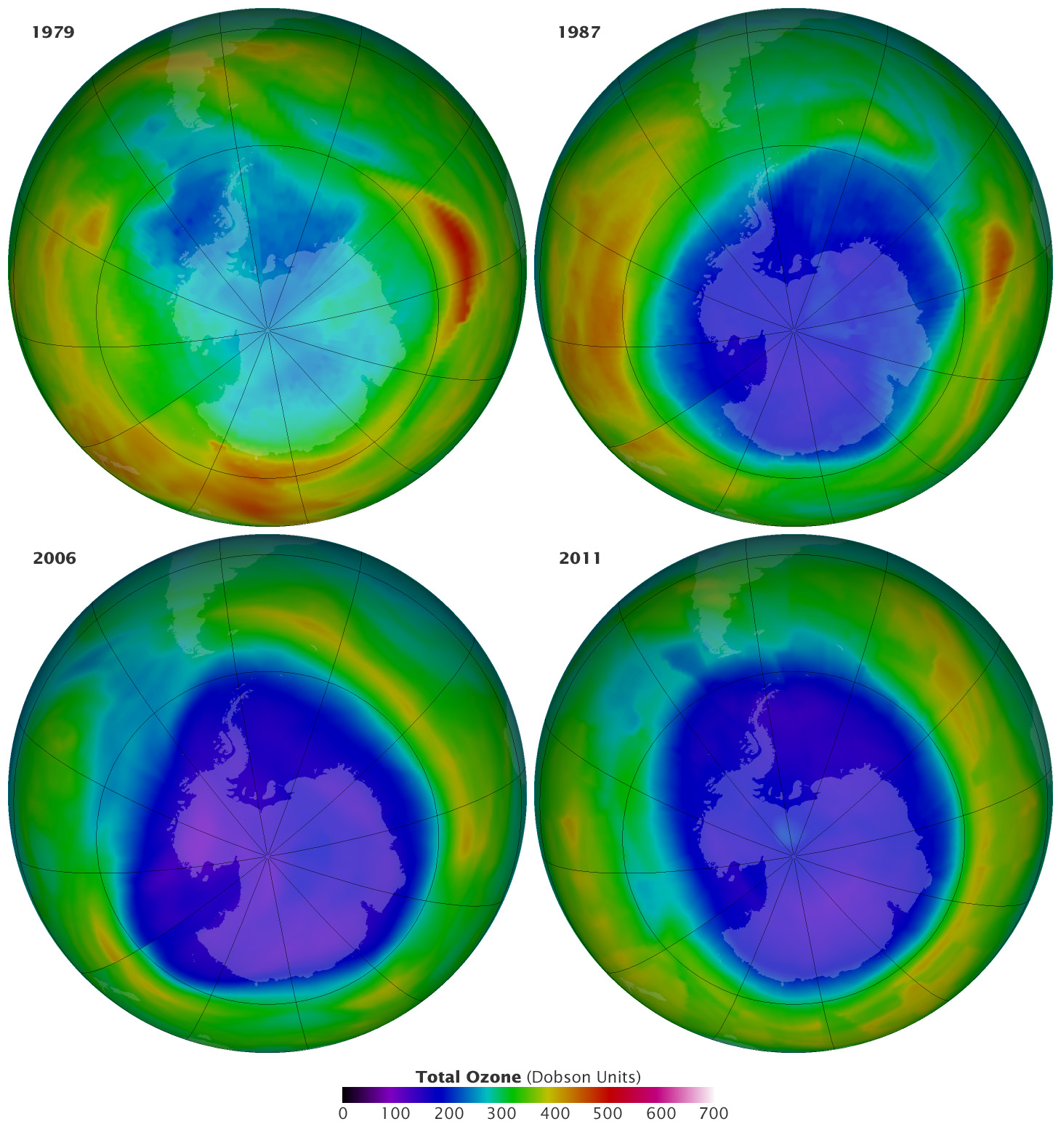 |
These images show that the ozone hole has changed a lot from 1979 to 2011 |
How Does the Montreal Protocol Help Protect the Ozone Layer?
The Montreal Protocol helps protect the ozone layer by regulating the production and consumption of ozone depleting substances (ODS). This includes chemicals such as chlorofluorocarbons (CFCs), halons, carbon tetrachloride, and others.
The treaty requires countries to reduce and eventually eliminate the production of these harmful chemicals, which are the primary cause of ozone depletion.
By regulating these chemicals, the Montreal Protocol helps to reduce the amount of ozone-depleting substances in the atmosphere, which in turn helps to protect the ozone layer and preserve its ability to protect life on Earth from harmful ultraviolet radiation.
How much is the Montreal Protocol Successful?
The Montreal Protocol has had a significant impact in reducing the release of ozone-depleting substances into the atmosphere.
According to the United Nations Environment Programme (UNEP), the protocol has resulted in the reduction of over 90% of ozone-depleting substances globally. This reduction has had a positive impact on the health of the ozone layer and has helped to slow down the rate of ozone depletion.
In addition to its impact on the ozone layer, the Montreal Protocol has also played a role in mitigating climate change.
Many of the chemicals targeted by the protocol are also potent greenhouse gases, contributing to global warming. The reduction of these chemicals has resulted in a significant reduction in their warming effect, helping to mitigate the impacts of climate change.
The Montreal Protocol is a historic global accord that has had a significant impact in reducing the release of ozone-depleting substances and mitigating the impacts of climate change. Its success serves as a testament to the power of international cooperation in addressing critical environmental issues.
However, the challenges posed by climate change and the continued release of ozone-depleting substances require continued action from individuals, businesses, and governments.
The Montreal Protocol is a reminder of our collective responsibility to protect our planet and ensure its continued health for generations to come.



